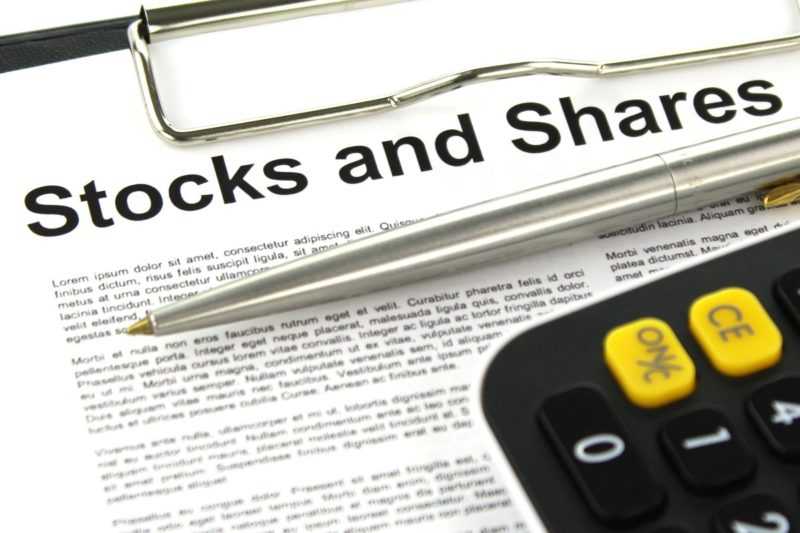2 min read

There are no rules that tell the minimum or maximum amount of money you need to start investing.
It may be less than you think.
Let’s say you have $1000 aside.
Is that amount enough to enter the world of stock investing?
Yes. Even $5 is enough to start investing.
But if you can invest more it is better. For you.
But before you jump head first into the world of stocks and bonds, there are a few things you need to consider.
One of the biggest considerations for investors with a minimal amount of funds is how to go about investing.
Here are some questions to answer before hitting the “buy” button.
First of all, what are your goals?
You have to define what you want your investments to accomplish. It will help guide you in the right direction. That’s advice from investors and experts.
What does it mean? You have to create a kind of road map. Like you are traveling to some unknown area and you need Google maps to show you the road.
So, let’s go back to the main question.
Do you want to save for retirement? For a new home? Or for a kids college fund? The answer will determine how risky you want to be with your money.
There are some very low priced stocks available.
You can begin investing in the stock market with a lot less money than many people think.
Here’s how much you need.
The minimum amount of money you need to open an account
Some online discount trading platforms have account minimum requirements. Minimums for several popular ones range from as little as $0 to $2,500.
It is for the self-directed account.
If you want to open a traditional full-service, broker-assisted account, you will need several thousand dollars.

However, all financial institutions have minimum deposit requirements. In other words, they won’t accept your account application unless you deposit a certain amount of money. With a sum as small as $1,000, some firms won’t allow you to open an account.
If you really want to start with the small, minimum amount of money you can use an app.
They will allow you to begin investing with just $5. Some apps offer you a choice of several funds to invest in. You basically end up owning part of the stock.
When you get to $5, the app invests that money for you into a diversified portfolio. In essence, it is a mix of stocks and bonds.
The other question is the minimum amount of money you need to buy stocks.

The minimum amount of money to buy stocks
If you want to buy a stock, you’ll need enough money to buy one or more shares of that stock. And you have to add the cost of brokerage commission.
Yes, we know you would like to start your investing with little money. But you must be aware. Stocks trading below $5 per share can be extremely speculative and dangerous. Usually, it is not worth dabbling with them.
Truth is that a single share can trade from pennies for some companies to hundreds of thousands of dollars for an A-class share.
But many companies’ shares cost, say, between $10 and $100 individually.
There are some very low priced stocks available. But before investing in the share market you should know some basic financial ratios.
Check valuation of stock’s price
It is equally important to buy shares at the right price points.
To earn money in share market, buying stocks at its right price is necessary.
What does it mean by the right price?
Estimating the intrinsic value of stocks requires a special skill. It isn’t quite as simple as it sounds.
There are several methods you can use to estimate the intrinsic value of stocks. Different methods will give different values of intrinsic value.
This itself is enough proof that how complicated it is to estimate the intrinsic value of stocks.
People who have the real art of estimating the right intrinsic value of stocks has become Warren Buffett’s.
You have to use financial ratios to value stocks
You can start by checking how the stock price has behaved in the last 2-3 years.
Suppose in the year 2012 the stock price was $35. After three years it has climbed to $50. That means the company has a growing tendency.
But it is also important to check if the stock price has touched overvalued levels?
You can know this in a variety of ways.
Start by comparing the stock price with its book value. If the Price to Book Value ratio is less than 1.5, we can say that stock has not touched overvalued levels.
If the book value of a stock is $100 and it is the market price is $160, it means its P/B ratio is 1.6.
This is a hint that stock price has touched its overvalued levels.
The amount of money a broker requires to open an account is the answer to the minimum amount. For a host of reasons consider opening an account with one that has a local office.
Here is a more expansive look at things to consider when beginning investing.
If you want to begin investing, consider reviewing at least some of the major tenets of personal finance.
For example a multiple-month living expense safety net and paying off high-interest debt, e.g., credit cards, before beginning investing.
You don’t have to invest all amount at once or in one stock. Rather diversify your money in different companies and different time of purchasing stocks.
YOU WOULD LIKE TO READ How to Become A Trader or Investor in Just 10 Minutes
How to collect the minimum amount of money
Begin to set aside a sufficient amount of money to open a brokerage account. Consider $1,000 or more as a minimum amount of money to do so. Lesser amounts, e.g., $100, 500, are insufficient to invest effectively.
Investing is a lifelong learning experience.
Consider investing only the money you can afford to lose.
Consider investing in stocks as part of an overall strategy that may include participation in employee retirement plans, payroll savings plans, and IRAs. There may be tax advantages to be had.
You have to recognize the differences in philosophies and approaches to investing versus trading.
Investing means long-term, but trading is short-term.
Be aware that trading stocks as a novice are most likely a recipe for disaster. Day trading is not recommended.
The literature is filled with evidence that the vast majority of those new to the market quickly lose significant money.
Do take the time to read and study first.
Risk Disclosure (read carefully!)



Leave a Reply